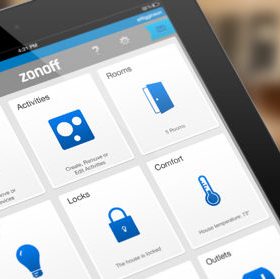How to Choose Your Home Automation Gate?
The motorization of the gate allows triggering the opening and closing of it. This is one of several home automation applications. Let’s go over the options based on the type of gate.
Technical criteria
There are various types of motorized gate opening systems. To make your decision, you must first consider the technical criteria. Let’s take a look at what’s next.
The type of opening: swinging or sliding
The ideal home automation system will also be determined by the weight and length of the gate. You should also be aware that numerous materials exist, such as metal, wood, PVC, aluminum, and so on. Finally, think about the options for more comfort, security and ecology: alarm, remote control, signal light, underground system, solar power, etc.
You can also combine ecology with home automation. More and more home automation kits, especially solar ones, are available on the market. You can find some for motorizing shutters, garage doors, gates, and so on. However, be sure that the power source is strong enough to run the motor and keep your gate moving.
Swinging gate: wheel or arm mechanisms
These two main families of gate motorization mechanisms are best suited to a swinging gate, and the mechanism does not require heavy work either.
The arm mechanism comprises two electric cylinders, supported on the masonry pillar on one side and the gate on the other. The wheel system is composed of a motorized wheel for each leaf. It is placed directly on the gate itself and ensures the movement of both parts.
However, most of the time, each of these methods is completely visible and thus unappealing.
Caution: If your gate is made of wood, choose motorization with an articulated arm that offers a smooth and regular movement. It will put less strain on the assemblies.
For a sliding gate: choose a suitable motorization kit
The gate slides automatically in its track thanks to a system of racks connected to the motor. You will easily find complete kits including motor, racks, remote control and accessories. They are preferable to the purchase of separate elements, whose compatibility may be a problem.
The plus: for long and heavy gates, opt for the kit with a buffer battery to avoid having to push the gate in case of a power cut.
How to choose your home automation gate?
Once you have selected the elements above that correspond to your needs and tastes, you have a clearer idea of the product you are looking for.
Take careful measurements between the edge of the gate and the pillar. This value must correspond to the options available with the product you desire to purchase. This value is usually given in the technical manual. Take a few photos of your gate and then visit an automation specialist or a home improvement store.
It’s worth noting that some remote controllers allow you to control various components of your home automation system, such as roller shutters or an alarm, with a single device.
Installing a gate operator
You can install your automatic gate yourself if you choose the proper sort of gate based on its weight and length.
Preparing the site
Clean the gate and the surrounding area thoroughly. Check that there are no parts that need to be changed, such as a lock or hinges. If necessary, make these changes. If you can bury your electrical cables in sheaths, this is a much more aesthetic solution. You must do this part before installing the automation.
Caution: remember to leave enough cable length protruding to correct an initial error, if necessary, without re-cutting a complete new measurement to the correct dimension.
Installing the gate motorization

Follow the instructions carefully and remember to take and record the necessary measurements carefully. Always use a level and a ruler to place the various elements: the proper functioning of the motorized gate depends on this step. Any error in level or axis will cause a malfunction that will shorten the life of the automation and the gate even if it allows the gate to open.
Install the motors in the blank, then mark the screw and bolt holes on the leaves. Make the necessary assemblies. Check the measurements and levels one last time, install and tighten the bolts. Then make the electrical connections.
Perform a few test runs to make sure everything is working correctly.
How much does gate motorization cost?
Expect to pay $350 to $600 for most do-it-yourself models (conventional electric or solar) and $400 to $1,600 for a motor supplied and installed by a professional.
There are rare models of complete motorized gates in a kit (metal pillars, gate, threshold, motor, remote control, wiring): count from $1 600, to be installed by you, for a good quality set.



